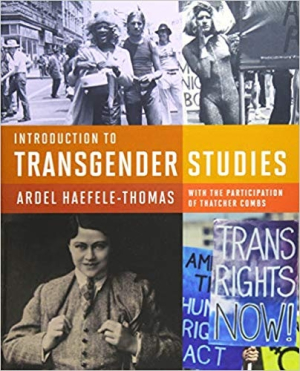Introduction to Transgender Studies
Pragmatic, philosophical, urgent, and inclusive, Introduction to Transgender Studies is a crucial introduction to an important area of study.
As new fields of academic study emerge, tracking their new findings, upcoming theories, and talented minds becomes complicated. Knowing this, the Introduction to Transgender Studies compiles the zeitgeist of transgender studies, capturing a massive scope of topics and representing a diverse spectrum of voices.
Put together by Professor of LGBTQ+ Studies Ardel Haefele-Thomas, this is the first introductory textbook to trans studies. It is a meaningful, straightforward resource for everyone from casual readers wanting to learn more to students deep in the field. It begins with the deceivingly complex world of biological sex and moves into recent queer activist history and modern-day struggles before it expands its scope to encompass media studies and international trans issues.
A welcoming book whose pleasing colors, font, and layout allow for easy reading and visual engagement, the text strives to avoid miring its audience in needlessly pretentious language. Its contributors are eager to explain lesser-known terms and ideas compassionately and without judgement. Audiences are eased into a rich world of academic and historic history, with definitions outlined with care and statements backed up by theory, scientific findings, and historical evidence.
Massive in scope, the book travels millennia back to provide examples of historical gender diversity and reaches across continents for its worldly, generous picture of queer lives from everywhere and everywhen, pushing against the Western focus that is all too common in academic texts. It delves into discourses on colonialism and imperialism that impact global notions of gender and sexuality, and makes a point of including voices from all backgrounds and identities. In every chapter, “Writings from the Community” sections illustrate diverse perspectives to broaden the experiences which the audience learns from and relates to.
The most powerful component of Introduction to Transgender Studies is its pragmatic approach to engendering critical thought. Encouraging analytical thinking right from the start, it gently but effectively challenges harmful stereotypes and normative ideologies. It also makes theory tangible, as when it asks “how did you express your gender today?”, making philosophical concepts of gender expression something that everyone participates in.
With high-level theories that often tie into current-day examples—like bathroom discrimination and the concerning rate of violence against trans people––Introduction to Transgender Studies is a powerful work and a constant reminder that what we learn is significant to real lives, every day.
Reviewed by
Mya Alexice
Disclosure: This article is not an endorsement, but a review. The publisher of this book provided free copies of the book and paid a small fee to have their book reviewed by a professional reviewer. Foreword Reviews and Clarion Reviews make no guarantee that the publisher will receive a positive review. Foreword Magazine, Inc. is disclosing this in accordance with the Federal Trade Commission’s 16 CFR, Part 255.

